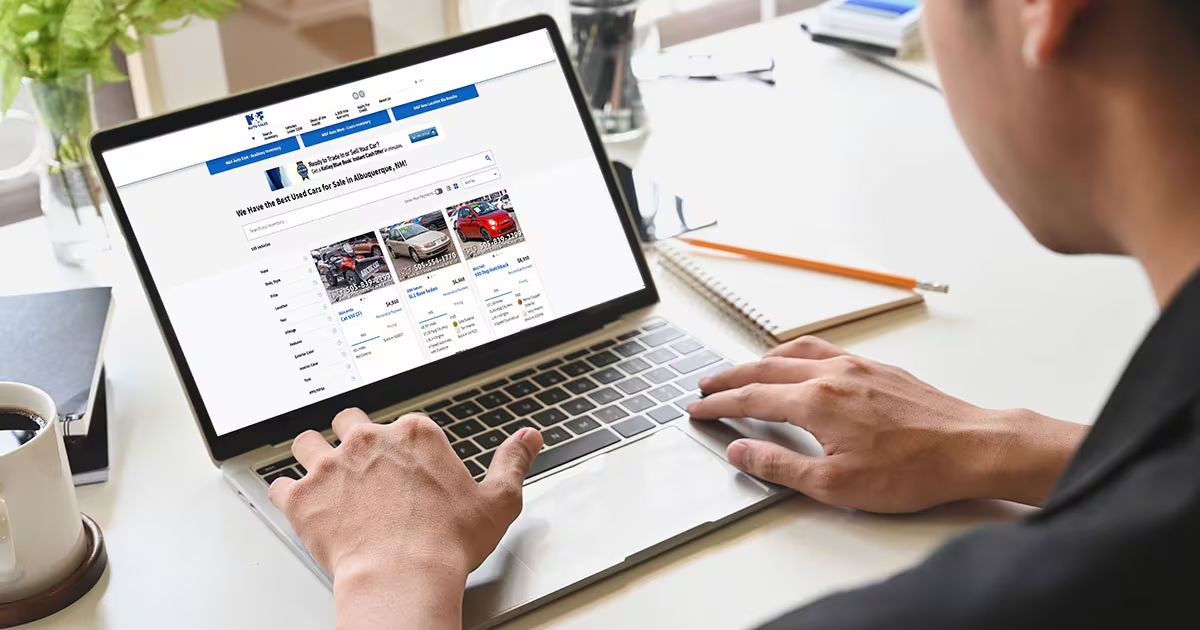Introduction
Buying a used car is a significant decision that requires careful consideration, research, and planning. For many, purchasing a used vehicle is an excellent way to save money while still obtaining a reliable mode of transportation. However, the process can be daunting, especially for first-time buyers. The used car market is vast and varied, with a wide range of options that can cater to different needs, preferences, and budgets. This comprehensive guide aims to provide you with the essential information and tips necessary to navigate the used cars buyers process successfully.
1. Understanding the Benefits of Buying a Used Car
One of the primary reasons people choose to buy a used car is the financial savings. New cars depreciate rapidly, with some losing up to 20% of their value within the first year. By purchasing a used vehicle, you avoid this initial depreciation, which means your car retains its value better over time. Additionally, used cars often come with lower insurance premiums, which further reduces the overall cost of ownership.
Another benefit of buying used is the ability to afford a higher-end model or additional features that might be out of reach if purchasing new. The pre-owned market offers a variety of vehicles at different price points, allowing buyers to find a car that meets their needs without breaking the bank.
2. Determining Your Budget
Before you begin searching for a used car, it’s crucial to establish a budget. Consider not only the purchase price but also the ongoing costs of ownership, such as insurance, maintenance, fuel, and registration fees. It’s important to strike a balance between what you can afford upfront and what you’ll be comfortable paying over the life of the vehicle.
A good rule of thumb is to spend no more than 20% of your monthly income on car-related expenses. This includes your car payment, insurance, fuel, and maintenance. If you’re financing the vehicle, aim for a loan term that doesn’t exceed four years, as longer loans can lead to higher interest costs and may leave you upside down on the loan (owing more than the car is worth).
3. Researching the Right Car for You
With a budget in mind, the next step is to research the type of car that best suits your needs. Consider your lifestyle, daily commute, family size, and driving habits when choosing a vehicle. For instance, if you have a long daily commute, fuel efficiency might be a priority. If you have a large family, a spacious SUV or minivan might be more appropriate.
Once you have a general idea of the type of car you want, delve deeper into specific models. Look for vehicles with a reputation for reliability, as this will reduce the likelihood of costly repairs down the road. Online resources like Consumer Reports, Edmunds, and Kelley Blue Book can provide valuable insights into the reliability, safety ratings, and resale value of different makes and models.
4. Deciding Between Private Sellers and Dealerships
When buying a used car, you have two primary sources: private sellers and dealerships. Each option has its pros and cons, and the right choice depends on your preferences and risk tolerance.
- Private Sellers: Buying from a private seller can often result in a lower purchase price since there’s no dealership overhead. However, private sales are typically “as-is,” meaning there’s no warranty, and you may have limited recourse if something goes wrong with the car after purchase. It’s essential to thoroughly inspect the vehicle and consider having a trusted mechanic check it out before buying.
- Dealerships: Dealerships generally offer a wider selection of used cars and may provide certified pre-owned (CPO) vehicles, which come with a manufacturer-backed warranty and have undergone a thorough inspection. While cars from dealerships may be more expensive than those from private sellers, the added peace of mind and the potential for financing options can be worth the extra cost.
5. Inspecting the Vehicle
Whether you’re buying from a private seller or a dealership, a thorough inspection is crucial. Even if the car appears to be in excellent condition, hidden issues can result in costly repairs down the line.
Start with a visual inspection. Check for signs of rust, dents, and mismatched paint, which could indicate previous accidents or poor maintenance. Inspect the tires for uneven wear, which could be a sign of alignment issues. Inside the car, look for excessive wear on the seats, pedals, and steering wheel, which might suggest the car has more miles than the odometer shows.
Next, take the car for a test drive. Pay attention to how the car handles, brakes, and accelerates. Listen for any unusual noises, such as clunking or squealing, which could indicate mechanical problems. Test all the vehicle’s features, including the air conditioning, radio, lights, and power windows, to ensure everything is in working order.
If you’re not confident in your ability to assess the car’s condition, consider hiring a professional mechanic to perform a pre-purchase inspection. This service typically costs around $100-$200 but can save you from buying a car with hidden issues.
6. Reviewing the Vehicle History Report
A vehicle history report is a crucial tool in the used car buying process. This report provides information about the car’s past, including any accidents, title issues, odometer readings, and previous owners. Services like Carfax and AutoCheck offer comprehensive vehicle history reports for a small fee.
When reviewing the report, look for any red flags, such as a salvage title (indicating the car was declared a total loss by an insurance company), multiple owners in a short period, or discrepancies in the odometer readings. A clean vehicle history report doesn’t guarantee the car is problem-free, but it significantly reduces the risk of purchasing a lemon.
7. Negotiating the Price
Negotiating the price of a used car can be intimidating, but it’s a standard part of the buying process. Before entering negotiations, research the fair market value of the car using resources like Kelley Blue Book or Edmunds. This information will give you a ballpark figure to work with and ensure you don’t overpay.
When negotiating, be prepared to walk away if the seller isn’t willing to meet your price. There are plenty of used cars available, and it’s better to take your time and find the right deal than to rush into a purchase you’ll regret later.
8. Financing Your Used Car Purchase
If you’re not paying cash for your used car, you’ll need to secure financing. It’s a good idea to get pre-approved for a loan before you start shopping. This will give you a clear idea of how much you can afford to spend and may give you leverage when negotiating with sellers.
When comparing loan offers, pay attention to the interest rate, loan term, and any additional fees. Credit unions often offer competitive rates, so it’s worth checking with them in addition to traditional banks. If you’re buying from a dealership, they may also offer financing, but be sure to compare their offer with outside lenders to ensure you’re getting the best deal.
9. Understanding the Total Cost of Ownership
The purchase price is just one part of the cost of owning a car. Be sure to factor in other expenses, such as insurance, maintenance, fuel, and registration fees. Some cars are more expensive to insure or maintain than others, so it’s important to consider these costs when deciding on a vehicle.
For example, luxury vehicles often have higher insurance premiums and more expensive repair costs. On the other hand, cars known for their reliability, such as Honda and Toyota models, may have lower maintenance costs over time.
10. Completing the Purchase
Once you’ve found the right car and agreed on a price, it’s time to complete the purchase. If you’re buying from a dealership, they will handle most of the paperwork, including the title transfer and registration. If you’re buying from a private seller, you’ll need to take care of these details yourself.
Make sure you receive all the necessary documents, including the title, bill of sale, and any warranty paperwork. If you’re financing the car, the lender will hold the title until the loan is paid off. Be sure to review all documents carefully before signing to ensure there are no hidden fees or terms you’re unaware of.
11. Registering and Insuring Your Vehicle
After purchasing your car, you’ll need to register it with your local Department of Motor Vehicles (DMV) and obtain insurance. The registration process varies by state, but it typically involves providing proof of ownership (such as the title and bill of sale), a valid ID, and proof of insurance.
When shopping for insurance, it’s a good idea to get quotes from multiple providers to ensure you’re getting the best rate. The cost of insurance depends on several factors, including your driving history, the make and model of the car, and your location. Some insurance companies offer discounts for bundling multiple policies (such as home and auto insurance) or for maintaining a clean driving record.
12. Post-Purchase Tips: Maintaining Your Used Car
Congratulations on your new (used) car! Now that you’ve completed the purchase, it’s important to take steps to keep your vehicle in good condition. Regular maintenance is key to ensuring your car runs smoothly and lasts as long as possible.
- Follow the Maintenance Schedule: Every car comes with a recommended maintenance schedule, which you can find in the owner’s manual. This schedule includes regular services like oil changes, tire rotations, and brake inspections. Staying on top of these tasks will help prevent more significant issues down the road.
- Keep Records of All Repairs and Maintenance: Maintaining a record of all work done on your car can be helpful if you ever decide to sell it. It also provides a clear history of the vehicle’s upkeep, which can be valuable if you encounter any issues.
- Address Issues Promptly: If you notice any warning signs, such as strange noises, warning lights on the dashboard, or unusual behavior while driving, address them promptly. Ignoring small problems can lead to more significant (and more expensive) issues later.
- Keep Your Car Clean: Regularly washing and waxing your car not only keeps it looking good but also helps protect the paint and prevent rust. Don’t forget to clean the interior, too – vacuum the carpets, wipe down the dashboard, and clean the windows to maintain a pleasant driving environment.
13. Selling or Trading In Your Used Car
Eventually, you may decide to sell or trade in your used car. When that time comes, it’s important to maximize the value you receive. Here are some tips to help you get the best deal:
- Keep the Car in Good Condition: As mentioned earlier, regular maintenance and keeping the car clean can significantly impact its resale value. A well-maintained car with a clean interior and exterior is more attractive to potential buyers.
- Gather All Documentation: Having a complete set of records for your car, including the title, maintenance records, and any warranties, will make the selling process smoother and increase buyer confidence.
- Consider Selling Privately: While trading in your car at a dealership is convenient, you’ll typically get more money if you sell it privately. However, selling privately requires more effort, including advertising the car, meeting with potential buyers, and handling the paperwork.
- Research the Market Value: Before selling or trading in your car, research its current market value using resources like Kelley Blue Book or Edmunds. This will help you set a fair price and ensure you’re not leaving money on the table.
Conclusion
Buying a used car is a journey that requires careful planning, research, and a bit of patience. By following the steps outlined in this guide, you can navigate the process with confidence and find a vehicle that meets your needs and budget for used cars buyers. Remember, the key to a successful used car purchase is being well-informed and taking your time to make the right decision. Happy car shopping!








